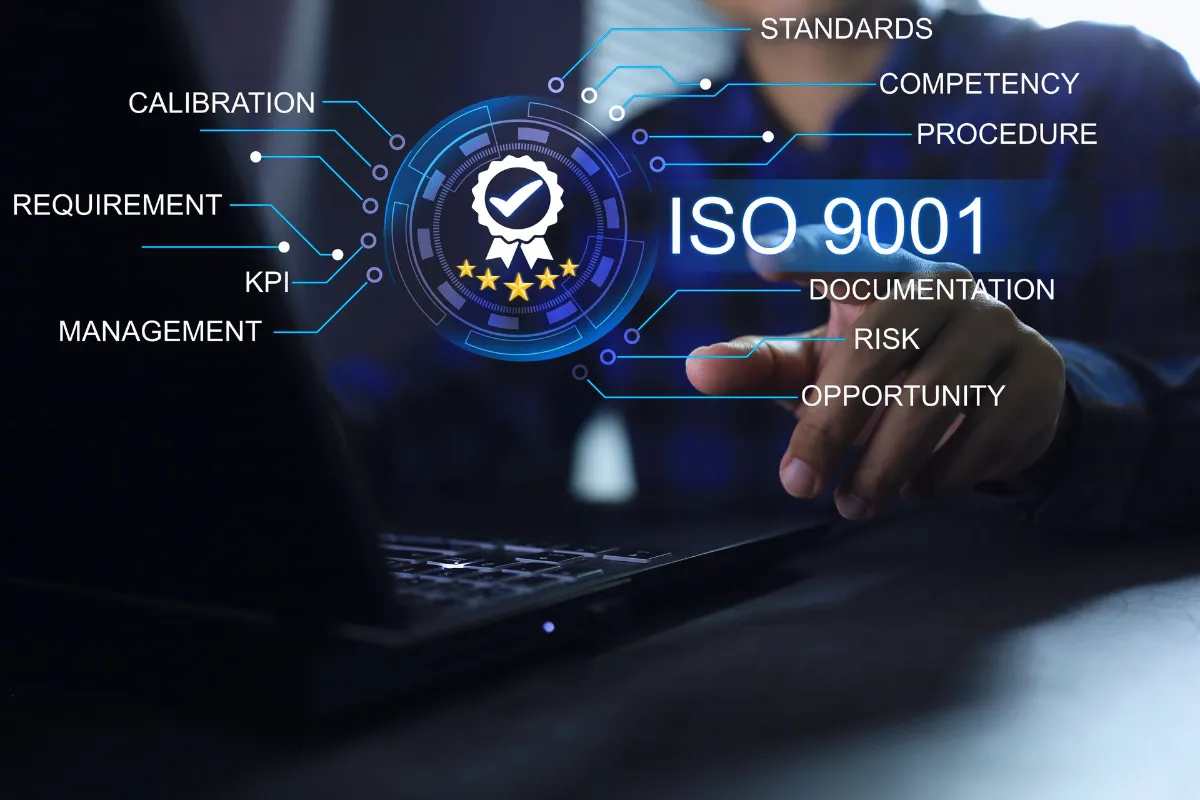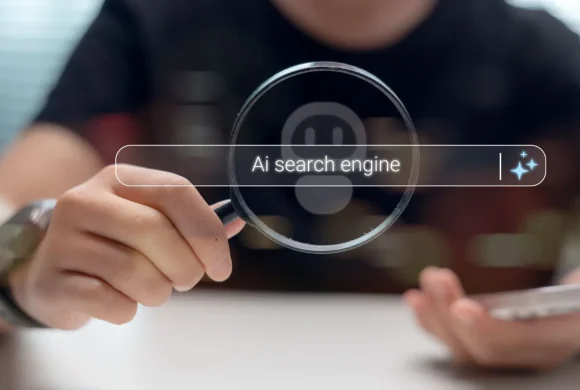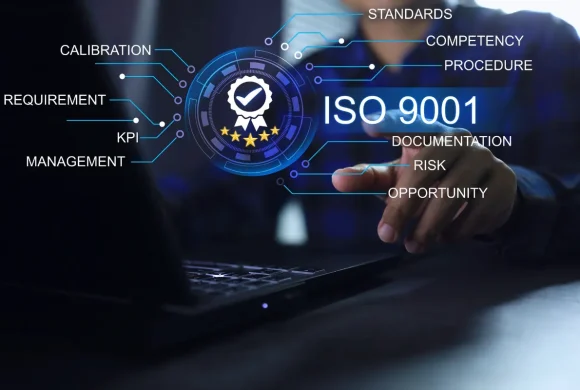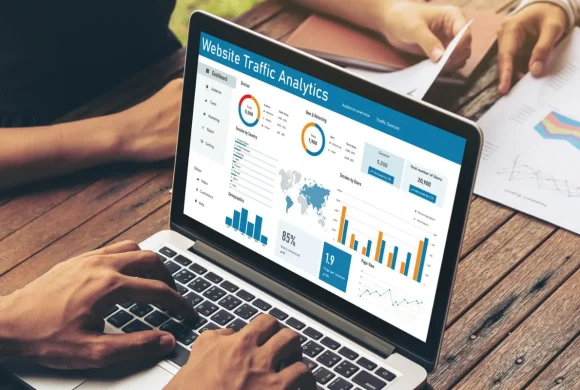How to write a capability statement that wins business

When your business competes in the construction, engineering, IT, property services, or other related industries, your work generally relies on B2B, government, or corporate relationships. While your reputation and website presence are trademarks, prospective clients often ask for a capability statement; they are generally required for tender processes or as part of a formal business pitch.
Over our journey, we’ve seen too many businesses copy and paste content from their website or product brochures and hotchpotch it to meet this request. In modern business practice, this is a big red flag. When dealing with professional procurement executives and decision makers, the expectation is for a polished document, either digital or printed, that clearly articulates your capabilities, experience, and credentials. Think of it like a business resume, which needs to beat the other ones they have on file.
“Think of a capability statement like a business résumé - it needs to beat the other ones on file.”
What elements make up a memorable capability statement
A capability statement is a supportive tool. Done well, it can create or reinforce a lasting first impression. Done poorly, it can put you at the bottom of the pile. There is no one-size-fits-all template for a high-quality capability statement, and sometimes, they are retrofitted to fit a particular buyer persona; however, there is a set of core elements that most buyer profiles will expect.
At a basic level, they need to answer four main questions for the buyer.
- Who are you?
- What can you do for me?
- Why should I trust you?
- How do I contact you?
At Brilliant Digital, we start with a checklist when designing a capability statement for our clients.
- A brief business overview. This section tells your story. It needs to be relevant and short. Your history, mission, values, what you do best, and what problems you solve.
- Capabilities and services. Short and sweet. Highlight expertise and specialisations and how they benefit the customer: faster delivery, short runs, specialised tech, and cost savings.
- Unique selling position (USP). What makes you different from your competition? This may include quality standards, innovative technology or processes, a national or international footprint, certifications, or even being locally or family-owned.
- Evidence that supports your capability. This can include recent projects, particularly if they resemble one you’re pitching for and include the outcome. A list of major clients adds a layer of credibility.
- Key personnel. Note key people in your team and their relevant qualifications and skills. This adds personality to your business and demonstrates that you have competent people working for your business.
- Accreditations and certifications. Highlight official certifications, licenses, or accreditations. For example, ISO quality management certification, safety accreditations, industry licenses, or IT certifications.
- Awards (if applicable). If your company has earned awards, industry recognitions, or media coverage, that is relevant; they should be added to the statement.
- Policies and compliance. For many Government or corporate tenders, highlighting a list of the company’s policies and compliance documents is essential. These may include OH&S, quality assurance, risk management, privacy, cyber security, environmental and sustainability, and ESG.
- Testimonials or case studies. Keep them brief; these provide social proof.
- Contact details. They must be clear and detailed. Include the business name, registered address, phone number, email, and website. Ensure you include the company ABN and ACN, if applicable.
There are emerging trends in capability statements
Traditional capability statements were one or two-page PDFs that included the above information. Much of it was in dot-point form, and graphics such as graphs and tables were used where relevant. Your website must mirror the information in the capability statement. Most buyers will cross-reference between the two. The traditional PDF format still applies for most tenders, but contemporary design changes how capability statements are presented and what is included. Some companies are shifting to digital presentations or interactive online profiles with embedded video. These are included on the consumer-facing website with a link provided for digital viewing.
Another trend is customisation. Companies are customising the capability statement to the intended audience, which is a savvy move. It may cost more depending on how many audiences you pitch to; however, understanding the key market is smart. Including highly relevant information and not overloading the statement with irrelevant information for a particular client can work to your advantage. In fact, some government agencies provide guidelines or templates for what a capability statement should contain for their projects. It is worth doing your research beforehand.
Sustainability, social values, and traceability have become critical inclusions. Businesses want to do business with good corporate citizens. For example, the Australian government is increasingly considering a supplier’s environmental and social impact alongside price and quality. New government policies, like the Commonwealth’s Environmentally Sustainable Procurement initiatives, mean buyers may favour businesses that demonstrate eco-friendly practices. Know who your end client is doing business with. It may be a Government department, and having traceability back to you can be important. In this instance, additional information about your social and sustainability values can make a difference.
Procurement teams focus on risk management. They tend to choose suppliers who deliver on time, safely, and with governance in place. A current trend is that even SMEs are expected to have systems similar to larger companies. Tenders may ask about your quality assurance processes, safety record, and financial stability. If you have formal certifications such as ISO standards, industry accreditation, or even informal but sound processes, highlight them. Include relevant insurance coverage, such as public liability and professional indemnity, and ensure you include licenses and registrations, builders’ license, engineering registrations, ICT security clearances, etc. In fields like construction or engineering, they’re often mandatory.
If your SME is agile and responsive, make that a selling point. “Our smaller size means we offer fast turnaround, short run capability and personalised service”. Clients appreciate suppliers who understand their needs and can adapt.
“Done well, a capability statement can create a lasting first impression; done poorly, it can put you at the bottom of the pile.”
Ensure your capability statement aligns with Australian standards and buyer expectations
Capability statements in B2B and when tendering for Government or corporate work are critical communication pieces. Take the time to ensure it aligns with standard conventions.
As mentioned, always display your Australian Business Number (ABN) and ACN for companies, typically in the header or footer. If you’re registered for government supplier lists or pre-qualification schemes, reference them in your statement or cover letter. It advises a buyer that you’ve been vetted already.
When pitching for government projects, it is important to do your homework. Most government bodies will publish length, format, and content requirements guidelines. Follow them. Government evaluators often discard or mark down submissions regardless of how good the content is. Don’t overuse marketing fluff. Keep the language clear and concise, and use clarity over hype rule with a balance of professionalism and approachability.
Show that your business meets Australian regulations and standards. Depending on your field, that may include building codes, engineering standards, or IT compliance. The buyer must know you won’t encounter legal or compliance issues during the project.
It might sound obvious, but ensure your capability statement uses Australian conventions. For example, use “s” instead of “z,” “optimise” rather than “optimise,” and Celsius and kilometres for units.
Always cross-check your statement with the eligibility criteria. For example, if a government tender’s criteria include “demonstrated local industry participation” or “environmental sustainability”, be sure your capability statement or cover letter addresses those points.
Your capability statement is a living document and a sales tool. It should be updated as your business grows and adapted to the specific tender or pitch. If used well, it can be the piece that wins the business.
Brilliant Digital is a full-service digital marketing agency
Brilliant Digital specialises in B2B marketing, and producing capability statements is a part of our service suite. With over 15 years of experience building digital marketing strategies and tailored digital marketing solutions, we help B2B companies expand their footprint and win more business.
Contact us today for an insightful discussion with our lead strategist, Deb Croucher.

About Deb
Meet the author
Deb Croucher is the founder of Brilliant Digital. She works directly with SME owners to create strategy-led, full-service marketing that delivers, not just in Google, but in the new world of AI-powered discovery.

Let’s Grow Your Business Together
Key Takeaways
FAQs
What is a capability statement?
A capability statement is a professional document that outlines your business’s strengths, expertise, and credentials. Think of it as your company’s résumé—it tells potential clients who you are, what you can do, why they should trust you, and how they can contact you. It’s often required in tender processes or formal pitches.
Why is a capability statement important?
A well-crafted capability statement creates a strong first impression and can help secure contracts. Done poorly, it may harm your credibility and reduce your chances of winning business. Procurement teams and decision-makers expect a polished, tailored document that shows you understand their needs.
What should a strong capability statement include?
Key elements usually include:
- A concise business overview
- Your core services and areas of expertise
- A unique selling position that sets you apart
- Evidence such as past projects, clients, or case studies
- Key personnel and their qualifications
- Certifications, accreditations, and compliance policies
- Awards or industry recognition
- Testimonials and clear contact details
How are capability statements evolving?
Traditionally, they were short PDFs, but many businesses now use digital presentations or interactive profiles with embedded video. Customisation is also a growing trend—tailoring the statement to specific audiences rather than using a one-size-fits-all version.
What trends should SMEs be aware of?
SMEs need to highlight agility, responsiveness, and personal service. Sustainability, social values, and traceability are increasingly important, especially for government tenders. Buyers also want reassurance about risk management, quality assurance, and compliance with regulations.
How can Brilliant Digital help SMEs create capability statements?
Brilliant Digital works with SMEs to develop professionally designed, tailored capability statements that reflect their brand, highlight their strengths, and meet industry expectations. With more than 15 years of experience in B2B marketing, we know what procurement teams and corporate buyers are looking for.
Why should an SME choose Brilliant Digital for a capability statement?
We don’t just create documents—we build capability statements that are powerful sales tools. We help SMEs align their statements with tender requirements, ensure compliance with Australian standards, and present their value in a way that stands out from competitors.
How often should a capability statement be updated?
It’s a living document that should grow with your business. Update it regularly to reflect new projects, clients, certifications, or awards. Tailor it for each tender or pitch to maximise relevance.
Do capability statements need to follow Australian standards?
Yes. Always use Australian conventions in language, measurements, and compliance references. Include your ABN, ACN, and relevant licences. For government tenders, follow the published guidelines exactly; submissions that don’t comply may be discarded.










